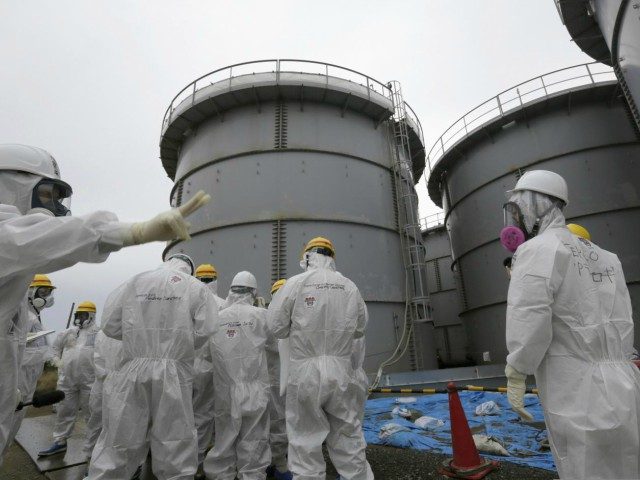Nuclear regulators in Japan recently revealed the radiation levels found inside the damaged reactor buildings at the Fukushima No. 1 nuclear plant are “exceedingly high” and worse than previously thought, the Asahi Shimbun reported Wednesday.
“Radiation levels were estimated at 10 sieverts per hour, a lethal dose for anyone who spends even an hour in the vicinity,” according to the report.
A massive amount of radioactive materials “attached to shield plugs of the containment vessels in the No. 2 and No. 3 reactors,” according to Japan’s Nuclear Regulation Authority (NRA).
The finding poses an “extremely serious” challenge to the shutdown process NRA has been attempting at the site, part of an overall decommissioning of the plant.
“It appears that nuclear debris lies at an elevated place,” NRA chairman Toyoshi Fuketa said at a news conference earlier this month. He explained the elevated location of the debris would make it “exceptionally difficult” for workers to move the shield plugs as part of the planned dismantling process.
“This will have a huge impact on the whole process of decommissioning work” and may force the NRA to reassess its plan surrounding the project, according to Fuketa.
The Fukushima No. 1 nuclear plant experienced a triple meltdown on March 11, 2011. The accident was triggered by an earthquake and tsunami in the surrounding area. During the meltdown, “the shield plug of the No. 1 reactor slipped out of place and was damaged by a hydrogen explosion that occurred at the reactor building,” according to the Asahi Shimbun. Large amounts of radioactive material leaked from the No. 1 reactor through the damaged shield plug and attached to the structure.
Removing the estimated 800 tons of nuclear fuel in the three Fukushima reactors that melted, fell from their cores, and hardened at the bottom of their main vessels has proven to be one of the toughest challenges for the NRA throughout the plant’s decommissioning process.
The Tokyo Electric Power Co. (TEPCO), along with Japan’s Ministry of Economy, Trade, and Industry (METI) had planned to start removing the first batch of melted reactor fuel from the Unit 2 reactor at Fukushima sometime in 2021. However, TEPCO and METI announced on December 24 that the start of this removal process had been postponed until 2022 or later due to delays in the development of equipment necessary to carry out the work. The organizations cited the ongoing coronavirus pandemic as having caused delays with a robotic arm needed for the debris removal process. The tool is being jointly developed in England by Veolia Nuclear Solutions and Mitsubishi Heavy Industries.
“Necessary testing has been delayed. And the shipment of the robotic arm, initially planned for January [2021], is now expected around April [2021],” Shuji Okuda, a METI official in charge of the nuclear facilities development, said at the time, according to the Associated Press.

COMMENTS
Please let us know if you're having issues with commenting.